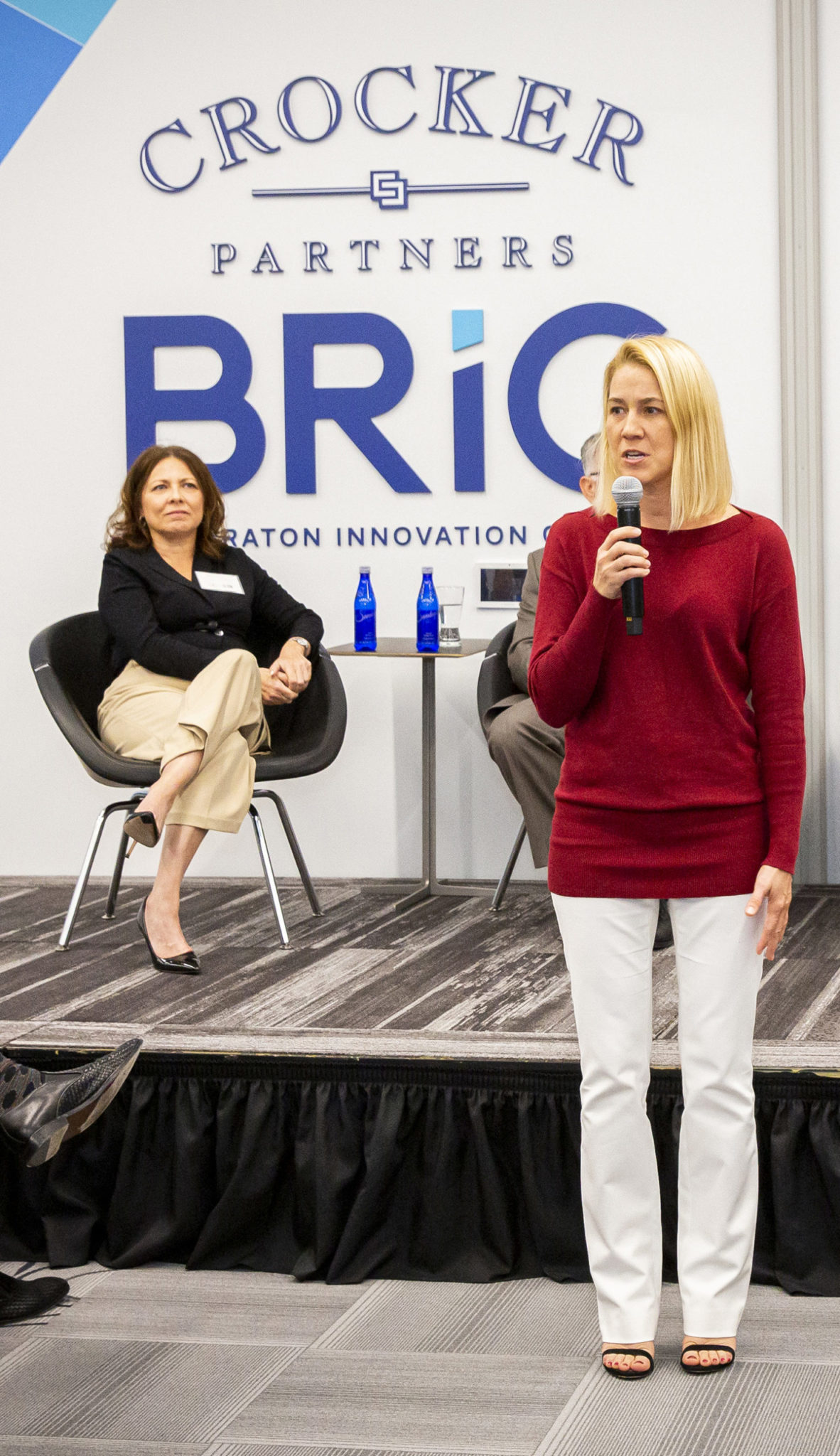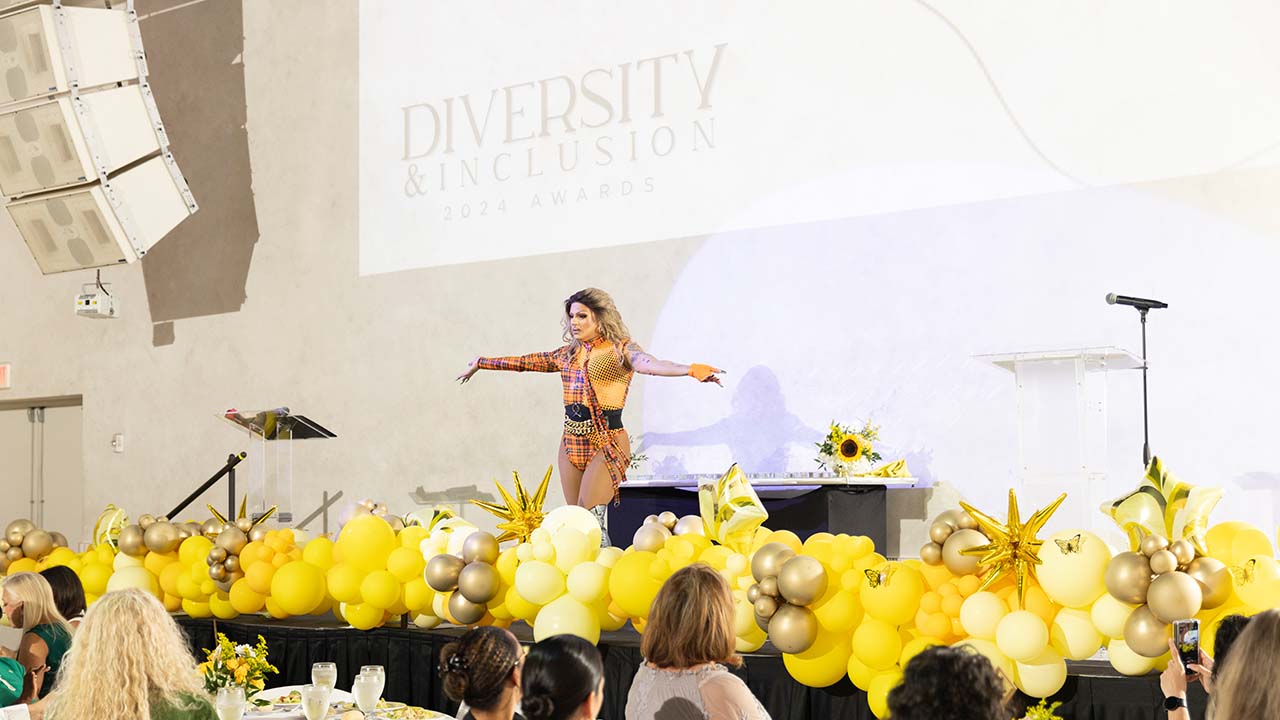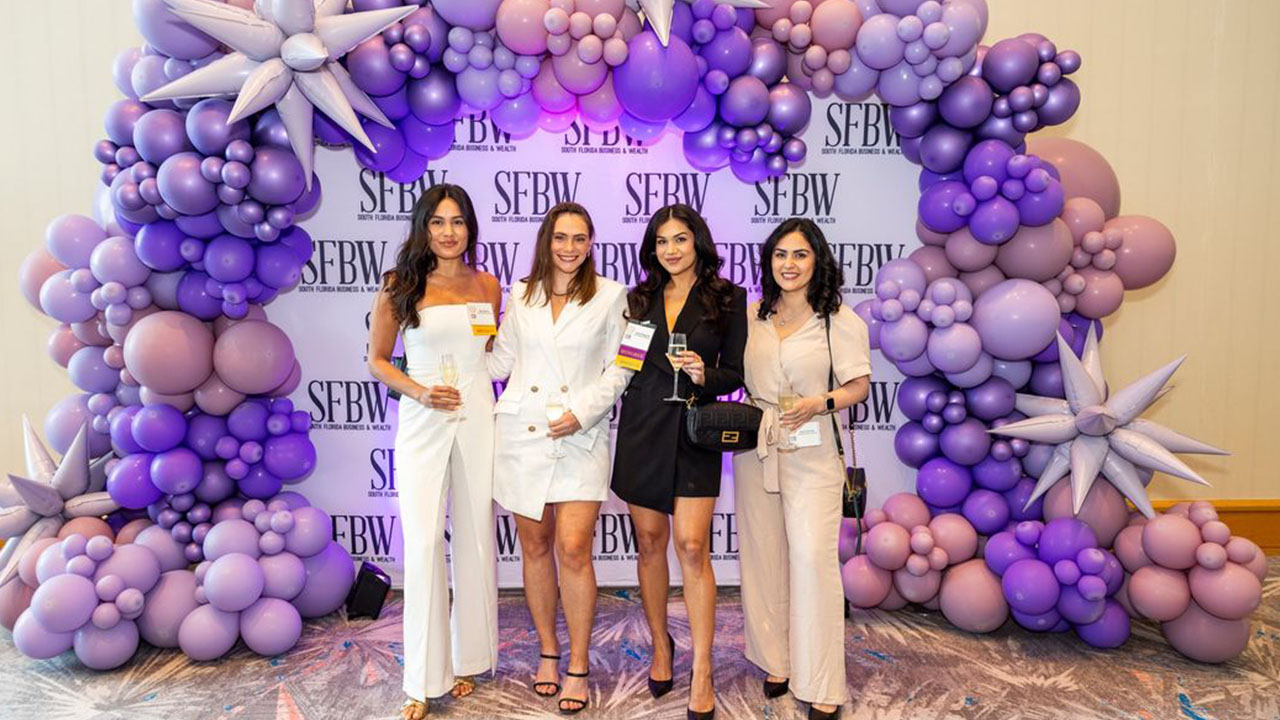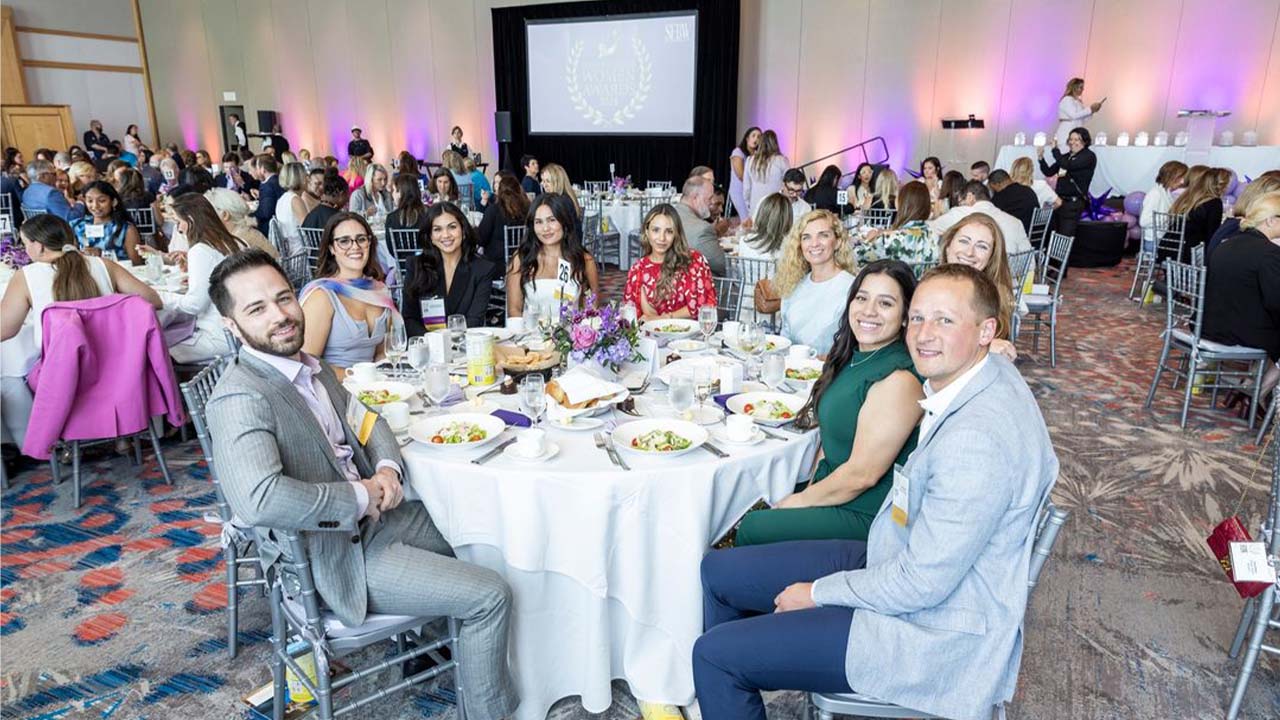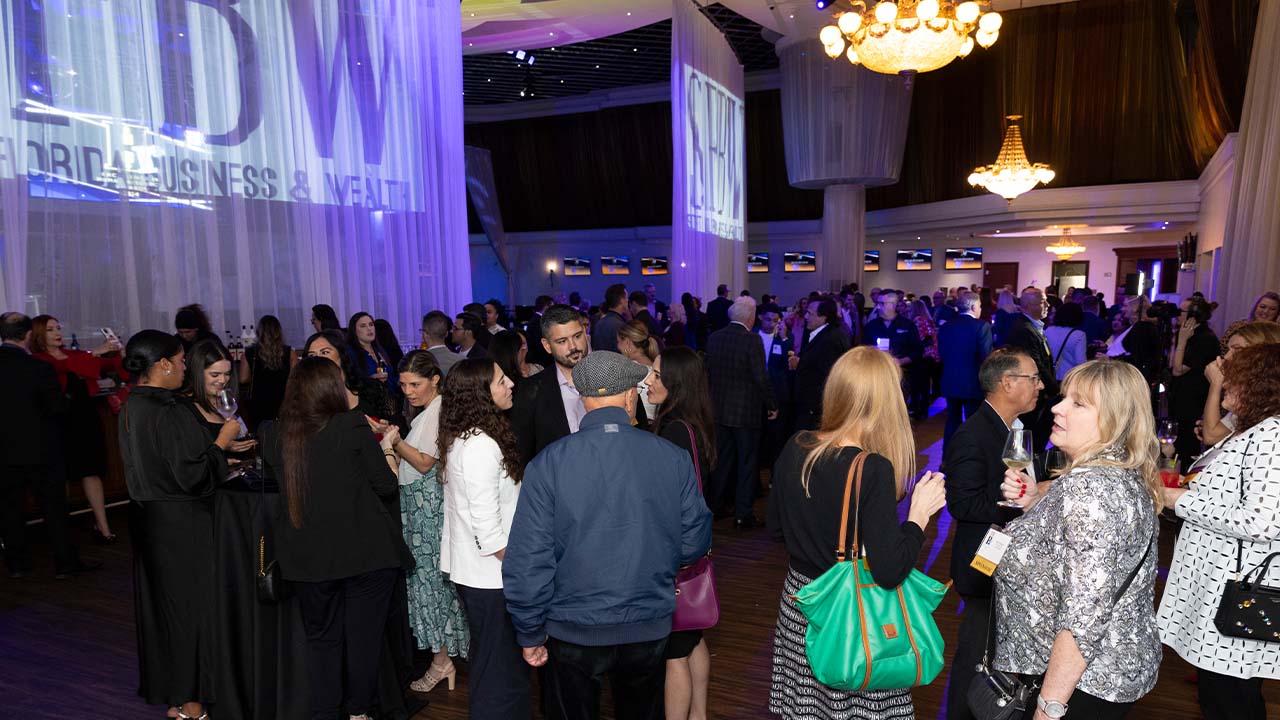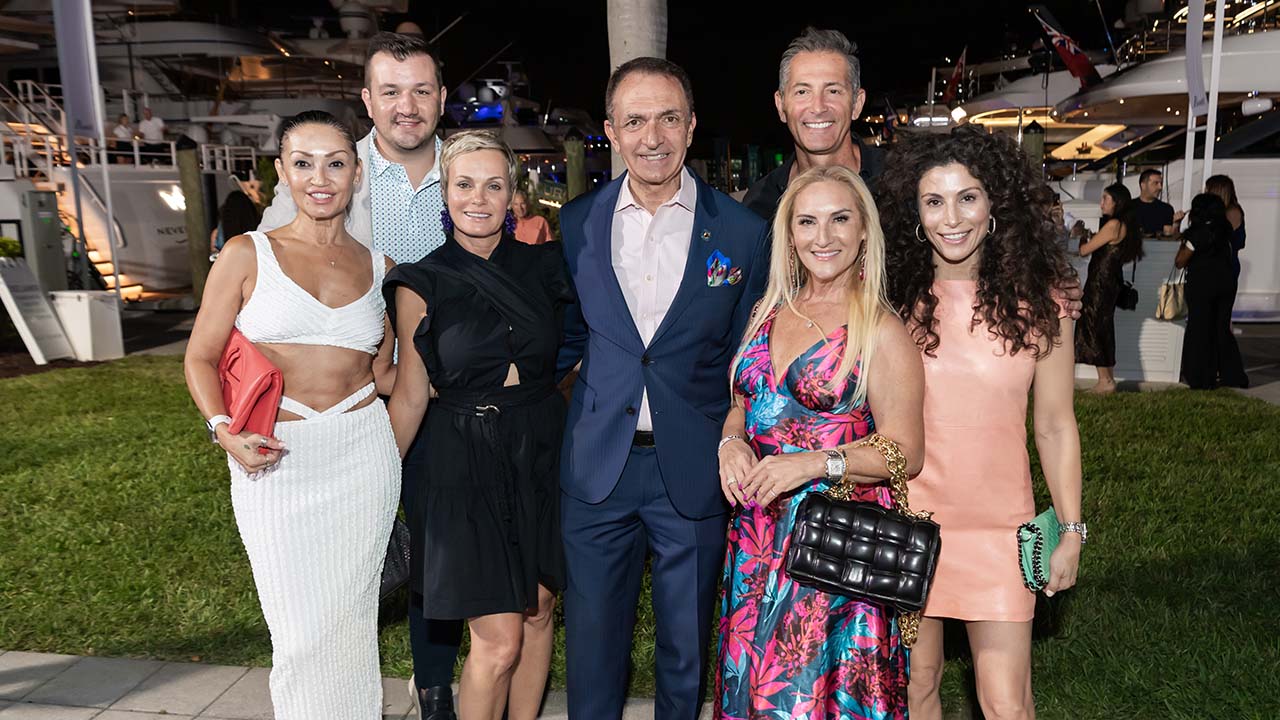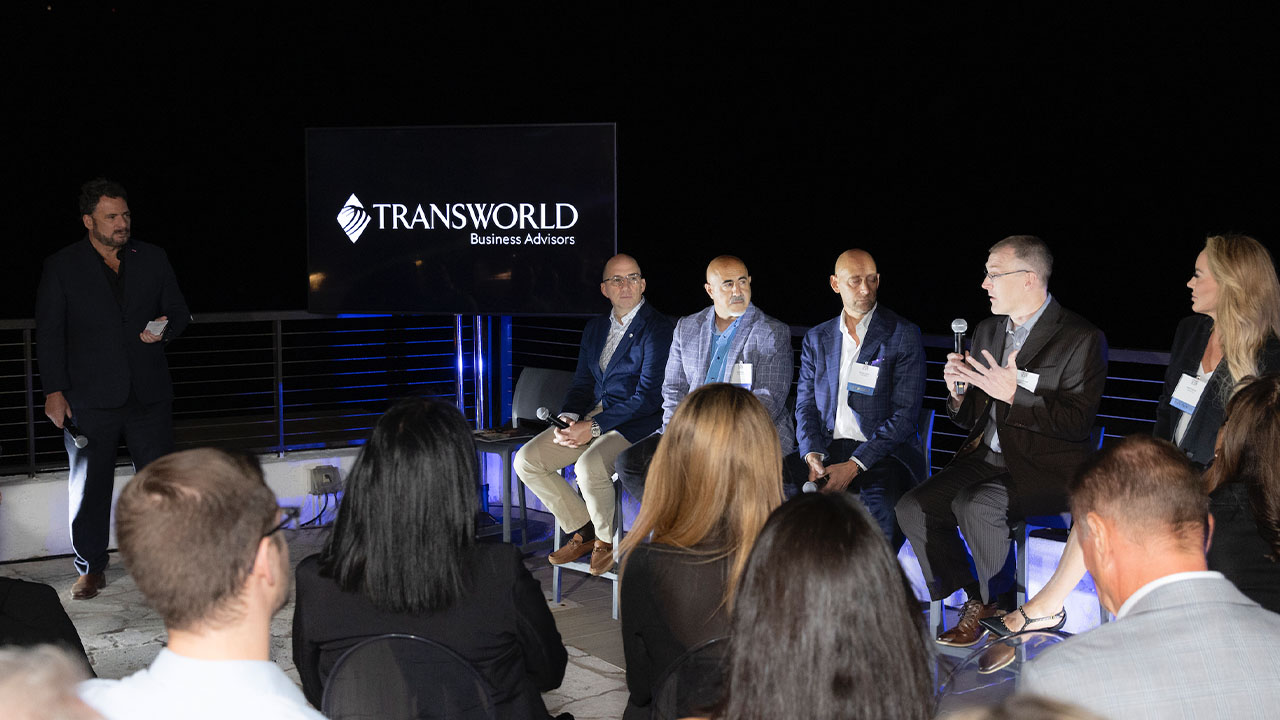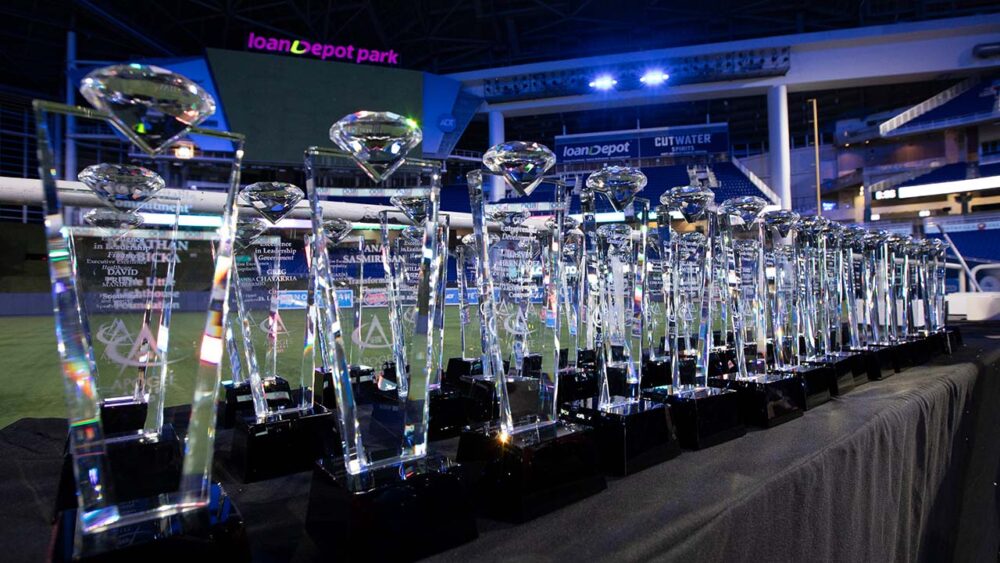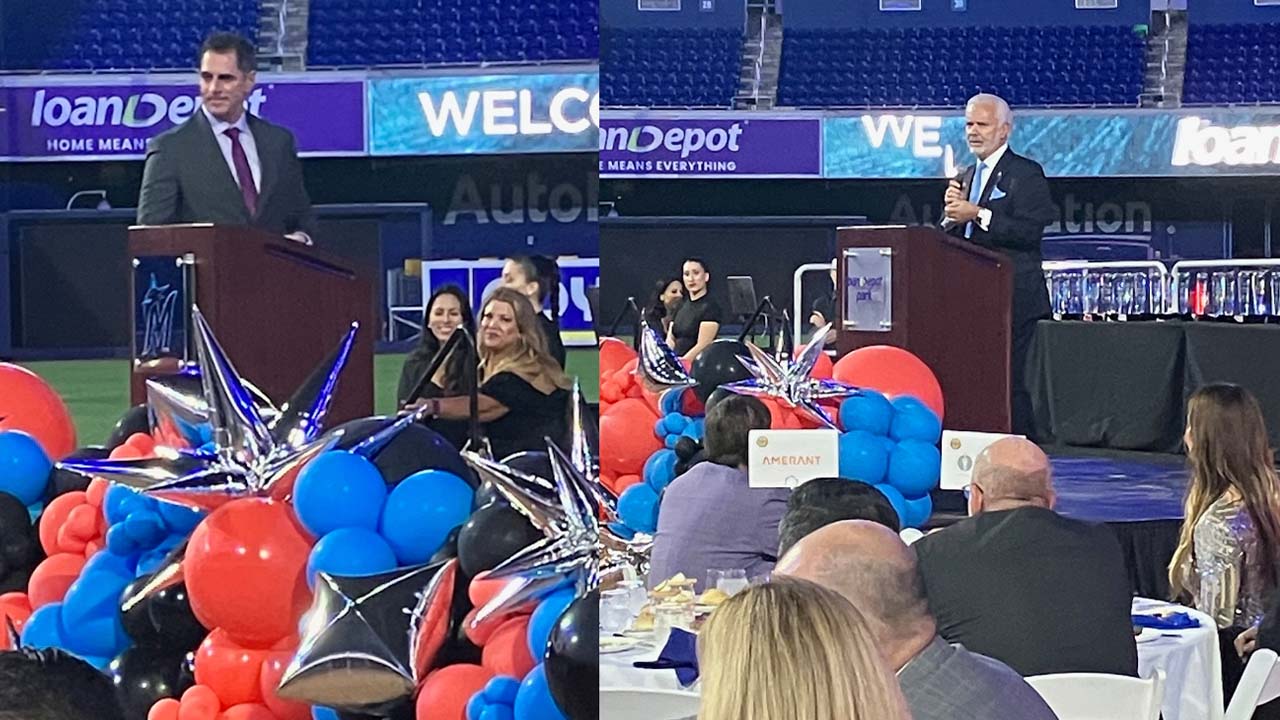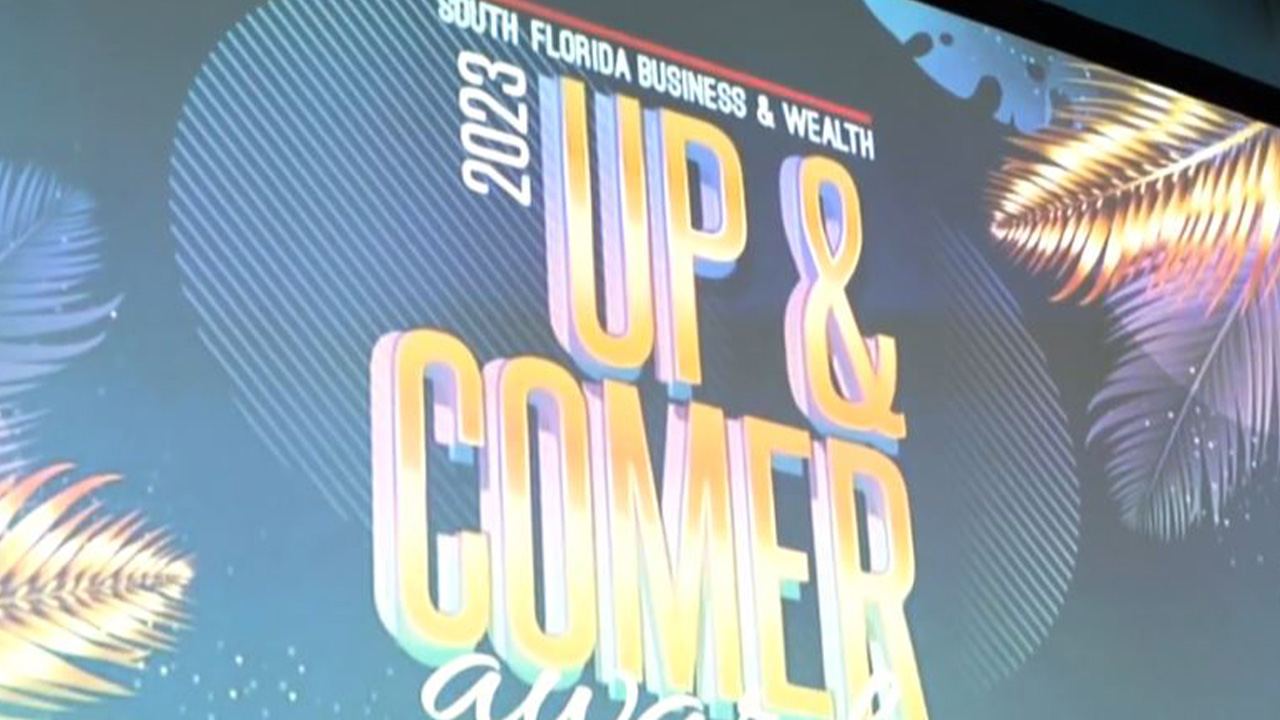[vc_row css_animation=”” row_type=”row” use_row_as_full_screen_section=”no” type=”full_width” angled_section=”no” text_align=”left” background_image_as_pattern=”without_pattern”][vc_column width=”2/3″][vc_column_text]
Change management experts shared plenty of insight in “Incorporating New Technologies into Existing Business Processes,” the latest installment of SFBW’s “Digital South Florida” series. The panelists:
• Maria Hernandez, innovation technology executive at Southern Glazer’s Wine and Spirits, the top distributor of wine and spirits in the United States. She has held senior positions at IBM, Modernizing Medicine and DHL Express.
• Stephen Garber, founder and CEO of Third Level. He is an international executive coach, mediator, facilitator, trainer and public speaker. His clients have included Rolls Royce, British Nuclear, Accenture and Lloyds Bank.
• Jonathan Wolfe, a senior director of the audit services department for AutoNation, which provides predictive data analytic models and consultation on operational best practices. He has been an executive at Rosetta Stone, Gibraltar Private Bank & Trust and LNR Property Corp.
The moderator was Chris Nielsen, the founder of Levatas, an AI company with expertise in computer vision, predictive analytics and custom software solutions. It has more than 100 professionals and its clients include Royal Caribbean, HSBC, Ryder and Slimfast.
Here are highlights of the discussion, edited for brevity and clarity. The event was held at the Boca Raton Innovation Campus.
Tell us a little bit about your role, and what drives the innovation that’s happening at your company?
Hernandez: My role is all about bringing innovation to Southern Glazer’s. We are currently the No. 1 distributor of wine and spirits, so the challenge is to stay No. 1. What my team does is, basically, look at new technologies, emerging technologies. We look at the business needs, and then marry the two.
Garber: Our job is to actually help people understand the impact of innovation. The real heart when we create this value is getting people to talk about what that innovation will bring, what the challenges of it will be, and also to identify what this innovation has to be done with—not to. The whole organization has to buy into it, or it will be sabotaged or it just won’t work. One of my favorite little slides is three silos, with the boss saying, “We need digital innovation.” And the first silo says, “I’m sales, I know what the customer wants.” The second silo says, “I’m IT, and I know how to do this.” And the third one says, “I’m the CFO, where’s my shiny object that I just paid for?” When we have that kind of a mindset, it doesn’t work. Well, our job is to help them to understand each other and the challenges involved.
Wolfe: How many of you, raise your hands, like the car-buying experience? One person? That’s what’s driving our innovation right now at AutoNation. It’s the fact that people hate buying a car. A lot of where we’re going with AutoNation is a lot of what you guys have talked about as far as AI [artificial intelligence] and machine learning and how we interact with our customers and a lot of the products and services that we’re going to be offering to our clientele, which is the end customer driving the car as well as some of the businesses that we do support. My role is specifically to make sure that they do it right. So, a lot of the implementation people come up with amazing ideas. I have a very diverse background. I’ve run IT departments. I’m a CPA [certified public accountant]. I have compliance understanding. I have risk management understanding. So, you actually have a conversation with somebody who’s saying, “Hey, I want to do this” and they don’t realize there is potentially a stakeholder that needs to be at the meeting to actually effectively implement it.”
How do you go about setting a vision for innovation within your position?
Hernandez: There’s actually a process and you envision what you want it to look at. I hate to use the word “process,” but it’s just a way for us to kind of follow the roadmap, where we take ideas from the business side of the house. We do have what we call a discovery phase, too, and then start looking at what technologies might apply to that idea. That’s where we test the ideas. We do produce proofs of concepts just to make sure that is yielding the results that we need before we go spend millions of dollars. If they are successful, we turn them over to be implemented companywide.
Garber: Visionwork, we find, is actually the first thing to do. First is, “What’s the purpose of this innovation?” And then, “What is it supposed to look like?” It’s really surprising how many people, particularly techies, for whom vision is not their thing. A lot of times what we find really works is to take organizations outside of their own industry and bring them to other places and have them learn the story of how did this happen? How did you get to this level of innovation? What was your vision then? Many times, it really does take an evangelist, someone who is the visionary, who was willing to hold that vision and help people over time, understand that vision and how it might apply.
Wolfe: I think part of the vision is listening to your teams, listening to your clients, listening to what is not working, keeping, obviously, an eye out on what the landscape is on your competitors and what they’re doing to garner ideas. I read all the time. That really allows me to learn what’s going on in the marketplace. Technology for technology’s sake doesn’t always work. You really need to have a real purpose for it—it’s going to be engaged, it’s going to be utilized and then it’s going to create some kind of value whether it’s tangible or intangible. And then taking that vision and making sure that you can quantify that to the stakeholders, which may be your board of directors, it could be investors, it could be a lot of different individuals within the organization that you have to now sell this to in some ways. Obviously, there’s always going to be dollars and costs associated with it, but once you do have that, and it makes logical sense, then you can kind of go down to the tactical execution.
What challenges have you run into around either culture, skill sets or budgets?
Wolfe: I think talent is obvious and skill set is probably No. 1 on the list. In my mind, you can always figure out the budgets. We implemented robotics at our organization. So, we have software robots that are doing transactions for us our shared service center and doing things that the normal folks would do at their everyday job. But the challenge is that: “OK, well, now we want to scale the robots.” And so everybody’s now thinking of ideas of how they can use a robot to do a thing within their department. And then they say, “Well, OK, the department that actually manages the robots has a very limited capacity. So, then it goes into a queue and nobody wants to wait 6-12 months for the queue to get worked through to get to their robot.” So, then they started going down the path of “Oh, I want to implement my own robot, so I’m gonna learn how to do this.” And of course, you’re talking people who are noncoders. So, it’s a challenge for them to really even implement that software, or even effectively implement that software or manage it and maintain it on a going-forward basis. So, I think the skills that are needed oftentimes in the organization is a challenge for industries as well as marketplaces as well as for products potentially even that you’re trying to sell.
Garber: Is anybody else in this room old enough to remember a transom? What a transom is, when “you throw stuff over the transom?” A transom is a window above a door that, in old office buildings, used to be used for ventilation. And a big part of the challenge is the organization wants to throw or take whatever they’ve done and throw it over the transom to the other department, so that they then can look at it, because they’re the experts there. The biggest challenge we find in the organizations is finding people to easily move into different conversations about different parts of the project, the common mindset when people really understand the why. Why are we doing this? If I use AutoNation as an example, if you don’t change your customers’ experience of buying cars, you won’t have customers buying cars, because everyone else is doing transformation as well. So, we really need to have an understanding of, it’s not just survival, but how do we thrive, and how do we have fun and passion, doing what we’re doing? So, it has to be that collective mindset. As we get really excited about this new thing we’re going to do, then there’s that unintended consequence. A lot of time technology represents a threat to people in the organization: “I’m going to lose my job. I will no longer be important. I will no longer be relevant.” So, we can help people understand that what you do today showing up sitting at that desk, doing a job that may be irrelevant, doesn’t mean you are irrelevant. You have an opportunity to learn and grow.
Hernandez: What I find is the challenges of getting senior leaders in the rest of the company to really, align around the appetite, tolerance for taking the risks of investing in something that you may not have metrics for. With innovation, there’s this whole fun aspect to it—you’re working with new technologies and all that. But this is really grounded on business decisions and goals and understanding that tolerance or appetite for innovation and what sort of level of innovation that a company wants to pursue. I think it’s a big challenge to align the company behind it.
When adopting new technologies, you’ll have the ability to buy or build. Do you have a preference or a tendency?
Wolfe: My mantra has been that you assess-buy first because that’s more of the ready-out-of-the-box. The widget may already be there. Usually, on the buy side, you’re more often than not expediting your timeline to success or to the implementation of whatever that technology is. The build side obviously takes skills. It takes a longer lead time, or testing how well and how effective can you really do it. When I was at Rosetta Stone, we had at the time a boxed CD product, the language software, and we were going to move it to the cloud. So, we’re going to make it software as a service. And the conversation at the executive committee meeting was, “What do we do? Do we build it or do we buy it?” And the software developer basically said, “Well, if we build it’s going to take us 18 months, and it will take a long lead time, it’s going to cost this much money and these are where the developers are, and this is how we’re going to do it. Or we can go buy a company, which we had targeted already, and it was going to take us about six months to basically implement.” So, it moved up the timeline dramatically. Think about the velocity of risk relative to business where you can have a company successful now and in 18 months or with a certain innovation, it’s gone the next day. And it happened a little bit actually with Rosetta Stone in the sense that they realized software providers were creating these apps—Duolingo was one of them—where they were doing crowdsourcing, they were building content at an exceptionally fast rate. The content wasn’t as good as ours, but they were building it and people were getting and it was free. We knew the writing was on the wall at that point that we had to do something different. We couldn’t be a $199 boxed CD product anymore. We had to move very quickly.
Garber: Whichever way you go, be sure to have somebody there to help you make it happen quickly.
Hernandez: I’m going to answer this one with “it depends really on the situation.” You know, the use case that you have in front of you. I’ve done both, and there’s pros and cons to each as Jonathan mentioned. Usually, because I’m exploring very bleeding-edge technologies, what I find is when I do want to go buy, there really aren’t that many vendors out there for me to do business with. So, I’m kind of stuck having to do it myself or with a team and so that has been the situation. Or, when I buy, I have to customize on top of what I buy. So, so I seem to sometimes get myself into sort of a gray area between having to buy and customize.
What technology have you seen not live up to its hype?
Wolfe: I brought in robotics for us and the software of it doing transactions and everybody was going to say like you’re describing it—it was going to revolutionize the world. Everybody’s gonna be out of their jobs and these robots are going to be doing all the pushing of transactions and all this stuff. And what we realize is, it’s just almost like a zero sum cost at the end of the day. All it does is reallocate the resource to focus on something more value-added. At the end of the day, somebody goes, “Well, this robot goes out to this website and pulls down a bank statement. That’s all it does. But, now, that clerk doesn’t have to go do that. And now that clerk can go analyze the bank statement and make a decision. This is where I can change my talent pool to start focusing on other higher value things.
Hernandez: There’s a lot of hype around blockchain. It reminds me of cloud [technology] about 10 years ago—a lot of buzz around cloud computing, and look where we are with cloud today. So, I think with blockchain, what’s happening is it’s still too early in sort of the adoption scale. I’m still trying to figure out a really good use case for it. I know there’s some out there. Food trust is one of the blockchains, you know, tracking, sort of, the food supply chain. I think there was just like the scare around lettuce, right? So tracing it back to where was that lettuce grown in what farm and what country and all that. But from a business perspective, at least for the logistics industry and the distribution industry that I’m in, where you would think a blockchain would be such a natural, I’m still not there. Maybe a year from now we’ll have a different answer.
Garber: A large bank decided to totally revamp the branch network, which was decreasingly important over time. These people do their banking on their phones now, ever so much more. They decided to implement the use of an iPad-like device in the branches. They ended up having a complete disaster where not only customers, but colleagues were literally throwing the things away and saying, “This just doesn’t work.” They quickly fixed it, but it was not a good reflection on the digital transformation department of the organization.
We are of the opinion that blockchain will be behind a lot of future technologies. It got overhyped, it got called out by name. It will be here. Yeah, not yet. What drives you more— adopting fast or not fast enough?
Wolfe: I think what scares me more is not adopting fast enough. If you adopt too quickly, you can you can figure it out. Maybe it breaks, you can kind of build it, get it back on track. If you don’t adopt fast enough you may be out of business at the end of the day.
Garber: If you’re in a legacy organization and you adopt too fast, you’re going to have chaos in your organization, if you really aren’t paying attention to how to do it well. You may implode as opposed to be under attack from outside and lose. If you’re in a startup or a younger organization, where failing fast works—where people use the same, oops, “OK, let’s go back and start over”—then I think fast is definitely the way to go. You really need to be able to be telling yourselves and each other the truth about is it working or isn’t it working? Can we make it work? Do we need to move into something else quickly? So, don’t just think, OK, we’re going to go fast, and it’s going to work or we’re going to go slow and it’s going to work. It has to be a constant feedback loop to be able to adapt.
Hernandez: I tend to side with really move fast. I’ve been in several industries and I go into companies not in distress, but not companies that are saying, “Oh, my gosh, we’re going to do innovation otherwise we’re out of business.” These are companies that are growing, doing extremely well and deciding to be No. 1 or continuing to grow rapidly. So, they’re investing in an innovation. They do that rapidly. I was in a situation where we did move fast with the technology, but the market was not ready. So that is not a good place to be either, because you just went really fast, introduced something to the market, and it flopped.
I think I might add another technology similar to blockchain where it just got all this hype: Virtual Reality hasn’t hit yet. We talked about it. It’s coming. It will have uses. Could you tell us a little bit about an innovation in your next 12 months that you are most excited about?
Wolfe: I think for us and my department, specifically, we’re doing a lot with predictive analytics. Looking at how we can identify a problem, a challenge, a risk before it happens, and really trying to move up the timeline. We have situations where we’ll have something go sideways within the organization, and it’s been festering for six months, 12 months, 18 months, two years, and you’re like, “Why didn’t we know about this sooner? Why couldn’t we have caught this sooner?” And, so, we have controls and processes in place today that help manage all that. But now we’re trying to innovate and move up the timelines that when it happens its instantaneous and we can react to it very quickly.
Then you move to the next evolution of prescriptive analytics: Not just what happened, what do we think will happen, but what should we do about what we think is going to happen? That’s when you can start triggering all sorts of increased customer satisfaction, and build brand loyalty.
Garber: So Lloyds is the largest bank by far in Britain. They went from eight years ago, when I started in the digital space with them, having somewhere south of 20 percent of new customers come from digital portals. It’s now over 80 percent. They recognized to really be successful for the long term, they needed actually take some of their best and brightest. They bought into a firm that would do it, Thought Machine [a banking technology platform]. They created what I call a skunkworks, where the best and the brightest are going offsite to go design this brand new thing that will probably have blockchain as part of the technology, because it does apply in finance. They will build this new thing over here with no customers, then test as you talked about, and then their idea is to lift and drop. So that, to me, is what I think companies large and small need to do.
Hernandez: I’m superexcited about computer vision. This is different than [augmented reality] AR and [virtual reality] VR. We are using OCR technology, optical character recognition technology. As you can imagine, in the wine and spirits industry, there are lots of labels. If you have a winery in Napa, they’re worried about making wine, they’re not worried about putting information in digital form. So, one of the things that we just completed testing is using computer vision to scan the back of a wine bottle. There’s lots of information behind that label. Everything from where the wine and the grapes come from and what we call tasting notes. We want to capture that information and the easiest, fastest way to do that is through this computer vision technology. So, we’re superexcited about the possibilities of going into wine stores and scanning the shelves. That’s another thing as we deal with retailers is, how do we use a smartphone to scan the shelves and then give them some of the digital data back as to what’s selling, what’s not selling, are things in the right place at the on the shelves. So, there are lots of use cases or applications for computer vision. ♦
[/vc_column_text][/vc_column][vc_column width=”1/3″][vc_gallery interval=”3″ images=”38896,38895,38894,38893,38892,38891,38890,38889″ show_image_description=”yes”][/vc_column][/vc_row]



